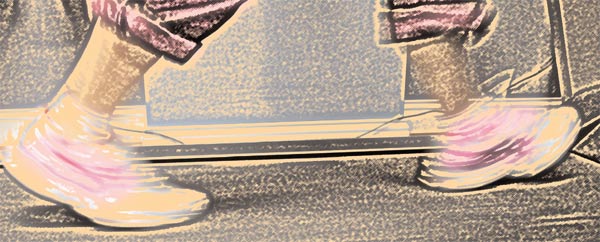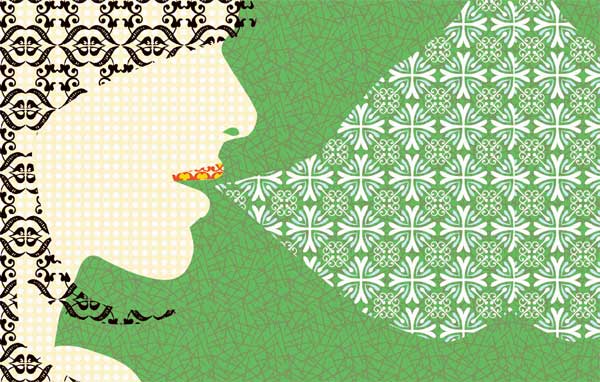
When Life Hands You a Disorder: Understanding Those with Asperger Syndrome
“Different, not less,” are the words Eustacia Cutler used to describe her daughter to others, because it accurately defined Temple as a person and not as an autistic person, or what others might disparagingly describe as geek or nerd. Born in 1947, Temple was diagnosed with autism in 1950. She began speaking at age four and credits her mentors from primary school onward in life for her achievements in life while struggling with a high-functioning autism, also known as Asperger Syndrome.
Today at age 64, she’s an American doctor of animal science, professor at Colorado State University, bestselling author and consultant to the livestock industry on animal behavior. Temple is also listed in the 2010 Times Magazine as one of the 100 most influential people in the world in the category “Heroes.”
During a time when Asperger Syndrome was not an actual diagnosis, Temple’s diagnosis at age three followed a dire prognosis from a doctor who said she may never talk. He recommended institutionalization. Fortunately, her mother refused to put her daughter away, and pushed to have Temple immersed in normal education as well as continued education through college.
Different…Not Less is also the title of Temple’s latest book, due out in April. It contains stories of 14 older adults with Asperger’s or ADHD, who have been employed all their lives, and some have families. They tell their own stories in their own words.
One of Temple’s many messages to parents and teachers of autistic kids involves accentuating their positive traits and talents. “Let’s work on building their strengths,” said Temple, who cleaned nine horse stalls every day at age 15. “What’s going to happen when they grow up and graduate, they’ll have no job skills; such as showing up to work on time.”
“We need to be teaching more job skills and trades,” added Temple, also author of Developing Talents, and Thinking in Pictures. “Right now we need more diesel mechanics, certified welders, chemical technicians, and machinists.”
Hans Asperger, an Austrian pediatrician, of whom Asperger Syndrome was named after, studied children in his practice in 1944. He observed kids who lacked non-verbal communication skills, demonstrated little to no empathy with their peers, and who were physically clumsy. As one of the autism spectrum disorders, Asperger Syndrome (AS) did not become standardized until the early ‘90’s and odds are, if you mention the disorder Asperger Syndrome to a friend or family member, more than likely they will reply with “what’s that?”
One thing about AS, is that the disorder is considered high-functioning autism and can appear as someone who is awkward, uncaring, rude, shy or distant. Nancy Myers, LCSW, a licensed psychotherapist since 1998 and in the mental health field for 22 years, is co-owner of Pinnacle Neurofeedback in Pittsburg and Brentwood, and gives a clear picture of what Asperger Syndrome looks like on the outside.
“It’s a condition where individuals have impairments in social interaction. They have difficulty recognizing social cues, emotional reciprocity, and lack of interests or achievements in other people. They tend to have other problematic behaviors such as over-focused interests and activities, inability to be flexible or transition appropriately, and have poor ability to regulate emotions,” said Myers, who is currently treating five patients, from autistic spectrum disorders to AS.
Myers’ practice also includes work with children and adults suffering from social interaction difficulties due to other autistic spectrum and/or learning disorders, ADHD, Bi-Polar, conduct and anxiety disorders. Her professional goal is to help improve the overall quality of life for adults, children, adolescents and families, and she accomplishes this through play therapy, social skills straining, anger management, parenting education and collaboration with agencies and schools.
Understanding the difference between a child with a developmental delay and a normally developing child requires the help of a licensed practitioner. “The thing that sticks out the most are their social interactions; teacher’s saying they’re isolated and withdrawn and not socializing with the group – more than just shyness,” said Myers of Brentwood, who is a wife and mom together with two kids ages 9 and 15. “A lot of people will see these disorders and misdiagnose them.”
She said AS is mostly found in males, under-diagnosed in females and is passed on genetically from one of their parents who has AS, or other conditions such as bipolar or Attention Deficit Disorder (ADD). “They’re finding the male brains of those with AS have an under-connectivity of their four lobes of the brain, poor long distance connectivity, but very good visual skills. Unfortunately, their brains cannot quickly integrate information from sounds and pictures,” she said.
Neurofeedback is one tool Myers uses to help her clients reduce symptoms and behaviors that are not productive. Using computer technology and electroencephalogram (EEG), Neurofeedback helps improve several conditions and improve personal performance. It’s used to monitor and feedback information to the brain about its own activities. “Electrodes are placed on the scalp and measure at the cortical level brain wave functioning. The information then comes up as feedback in a game or movie on a monitor. The feedback is visual, auditory and tactile, and that gives folks the information to influence and/or change brain wave functioning,” explained Myers.
She said it normally takes 20 to 40 sessions, each 35 minutes long, and costs $125 per session.
“Weigh that against years of medications and appointments,” added Myers, who says selective insurance companies are now covering it. “The sessions won’t cure the disorder, but instead reduces symptoms and sometimes the need for medication.” She said the sessions also help with physical calming and anxiety, something Temple knows a lot about.
In her seven-time Emmy-Award winning HBO film called Temple Grandin, Autism Gave Her A Vision, She Gave It A Voice, Temple designed and created her own calming device in 1965 called a “Squeeze Machine,” patterned after a squeeze chute used for inoculating cattle. When she saw the calming effect it had on a frantic cow on her aunt’s farm in Arizona, she discovered it had the same comforting effect on her, when she became hypersensitive.
Whether through self-calming devices, Neurofeedback or therapy sessions, today there’s a wealth of resources and help available for parents, teachers, family members and those concerned with children and adults with Asperger Syndrome.
For more information, contact Nancy Myers, MSW, LCSW, Pinnacle Neurofeedback, Lighthouse Counseling at 130 E. Leland, Suite C, Pittsburg, California, or 191 Sandcreek Road., Suite 215, Brentwood, California. Phone (925) 240-0943 www.pinnacleneurofeedback.org
Also, visit Temple Grandin’s official website at www.TempleGrandin.com


